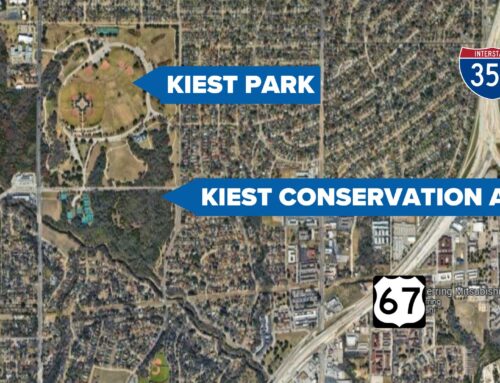After last week’s council meeting, proposed Oak Cliff projects like Alamo Manhattan may now be required to open 10 percent of their units to subsidized housing voucher-holders if they want to increase density or get any city tax revenue. It’s the one successful part in an otherwise failed attempt to bolster affordable housing in Dallas.
Last week, East Dallas Councilman Mark Clayton passionately spoke in favor of an ordinance that would forbid landlords from discriminating against tenants who use federally subsided vouchers to pay rent, a move that proved unsuccessful after nine council members voted against it, including Oak Cliff’s Scott Griggs.
“If we won’t fight for our most vulnerable citizens, what will we fight for?” Clayton asked during last week’s council session.
Those who voted against the ordinance largely cited conflicts with current state law. While many states require residential developments of a certain size to include affordable and/or subsidized housing, in 2015 Texas banned municipalities from enacting such ordinances after Austin and Dallas took steps to explore such programs.
“It’s going to go against state law and get tied up in courts,” Councilwoman Jennifer Staubach Gates said of the proposed ordinance.
But it wasn’t a total loss for Clayton. The council did support a plan that requires developers to open 10 percent of their entire project to subsidized housing if they seek subsidies from the city such as Tax Increment Funding (TIF), or if they request a zoning exemption to increase density on a project.
“If you need a favor from the city, then you have to give us something,” Clayton says. “The goal is to make it a little easier for firefighters and teachers and police officers to live in our neighborhood.”
In Oak Cliff, the new ordinance would effect projects like the Alamo Manhattan, which received $11.25 million in city tax dollars, and Exxir Capital, which so far has received $7 million in tax funding. Since zoning has already been tweaked across much of the neighborhood, increased density will be less of an issue than city-supported projects in Oak Cliff in regards to this ordinance.
Coined by the Dallas Morning News as the city’s most vocal advocate for the poor, affordable housing has been on the Clayton’s agenda since he took office in 2015. He sits on the city’s Housing Committee with Griggs, which has worked to meet the tenets of a voluntary compliance agreement the city entered into with the federal government after it was investigated for discrimination for its affordable housing practices in 2014. The United States Department of Housing and Urban Development (HUD) said the city was to blame for housing disparity that kept affordable housing out of North Dallas, instead concentrating it in southern Dallas and creating de facto ghettos.
To be clear, affordable housing is not the same as Section 8 housing or subsidized housing.
The definition of affordable housing is a rental rate at which individuals or families are not paying more than 30 percent of their total income. Since Dallas’ median income was $61,644 in 2015, that would mean an average monthly rent of $1,541 or less. Affordable housing is not to be confused with subsidized housing, in which the government provides vouchers to cover the rent that a family cannot afford to pay; subsidized housing is also sometimes called Section 8 housing.
“City of Dallas affordable housing programs have a broad goal of helping to provide a supply of housing that is affordable to households within the middle to lower income groups,” Theresa O’Donnell, the city’s development director, told us in 2008. She made it clear that the term “affordable housing” is “not intended to be associated only with indigent households.”
“Here’s where I’m going to get creamed for this article,” Clayton jokingly tells the Advocate. “People will say: ‘Oh he’s bringing Section 8 housing to the neighborhood.’ That’s not the case. We’re not adding any stock.”
Clayton says the new ordinance is a minor step to fix a major problem, but he’s pleased with the progress made in requiring landlords to accept housing vouchers in 10 percent of their units if they want to increase density or benefit from city tax dollars. He shakes off criticism this will negatively impact landlords’ bottom line, saying that HUD covers up to 110 percent of market rate, which in Oak Cliff’s 75208 ranges from $580 for a studio to $1,490 for a four-bedroom unit (see the full list of 2017 city market rates by zip code).
“You’re still making your profit, just through vouchers. It requires a little extra paperwork,” Clayton says. He says criticism that HUD’s market rates are out of date, thus leading to lower profits, is also unfounded.
“Market rates are updated every year in March,” he says. “We can’t be market manipulators. But we can do more to help the teachers and police officers who can’t afford to rent here and can’t afford to own.”





